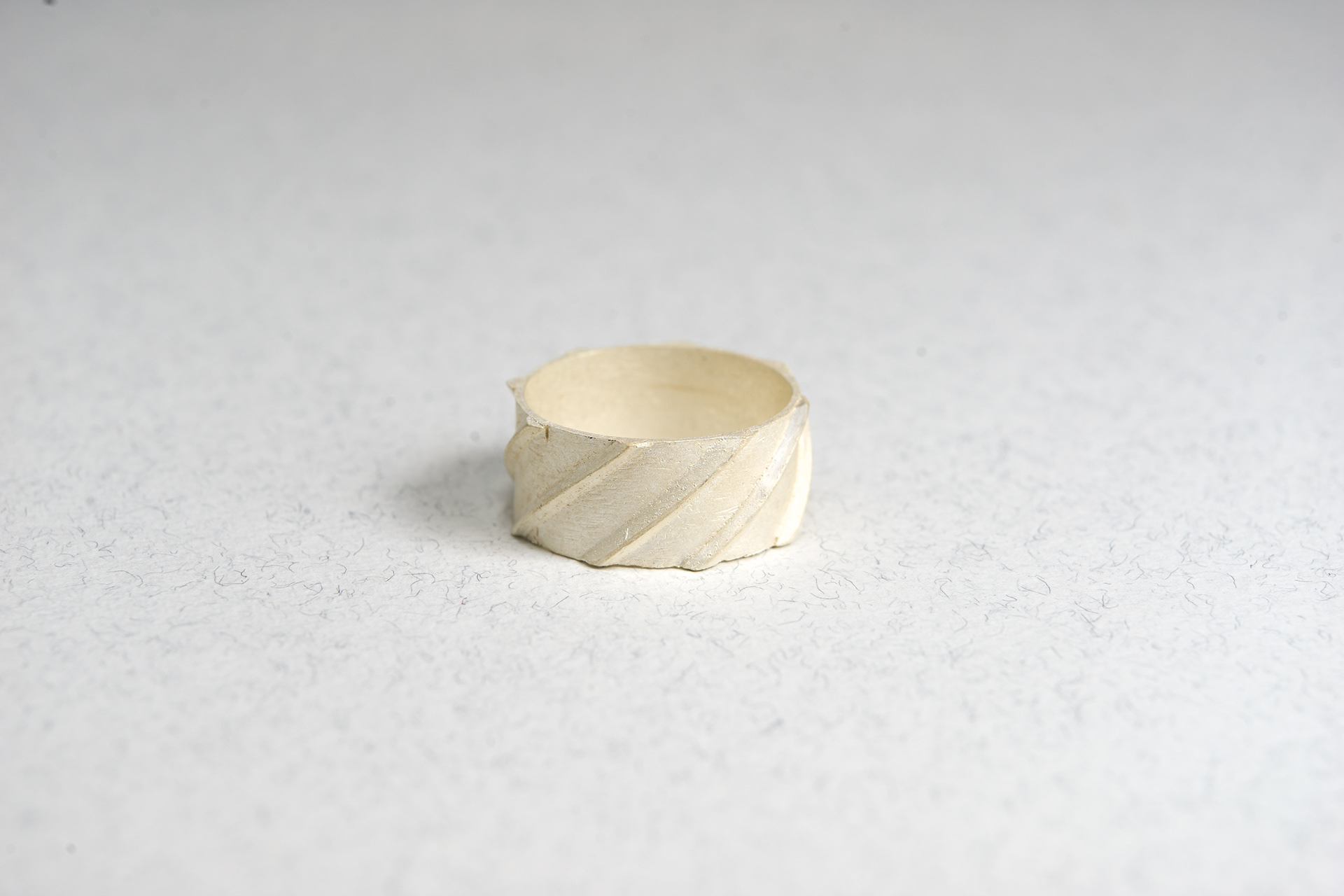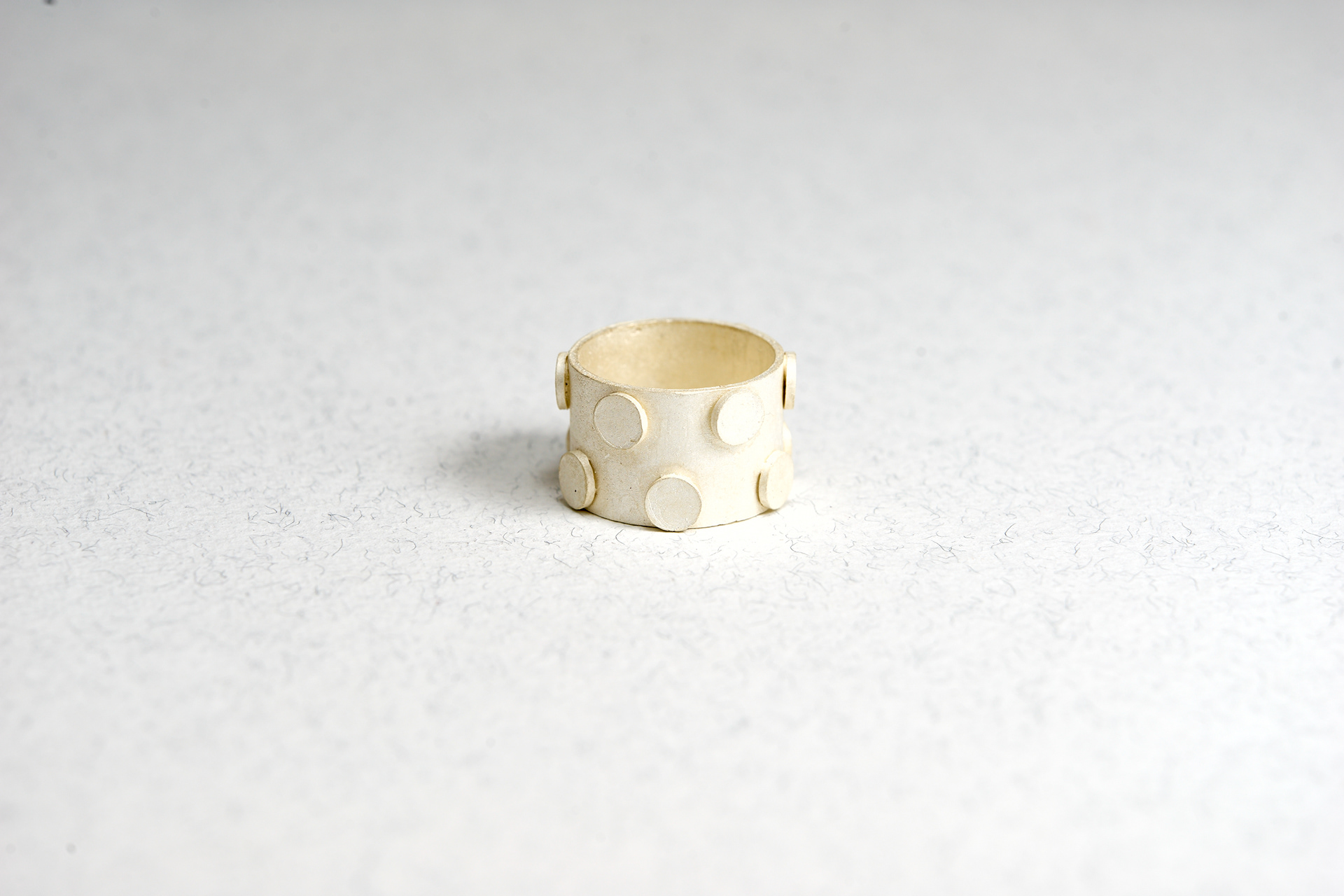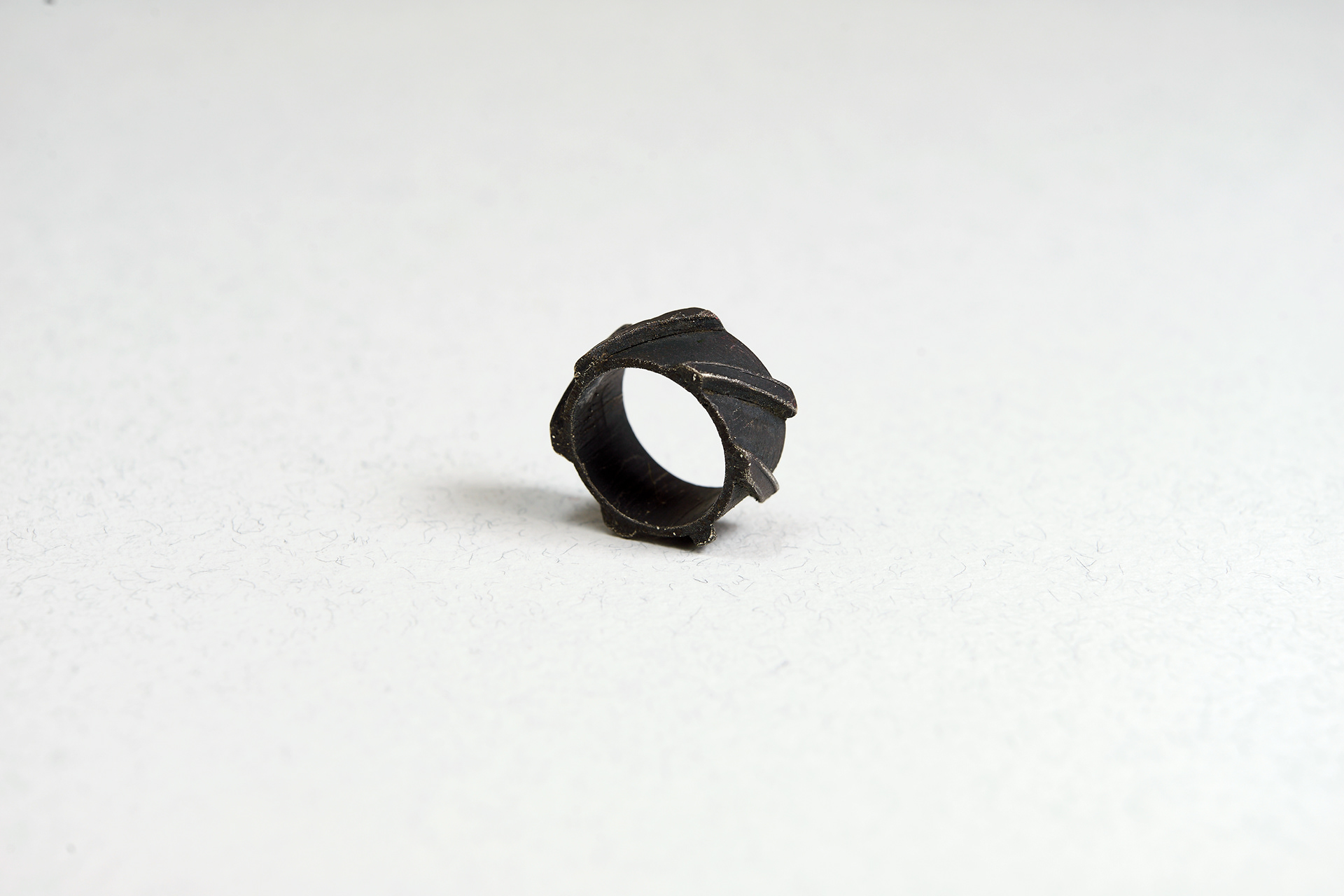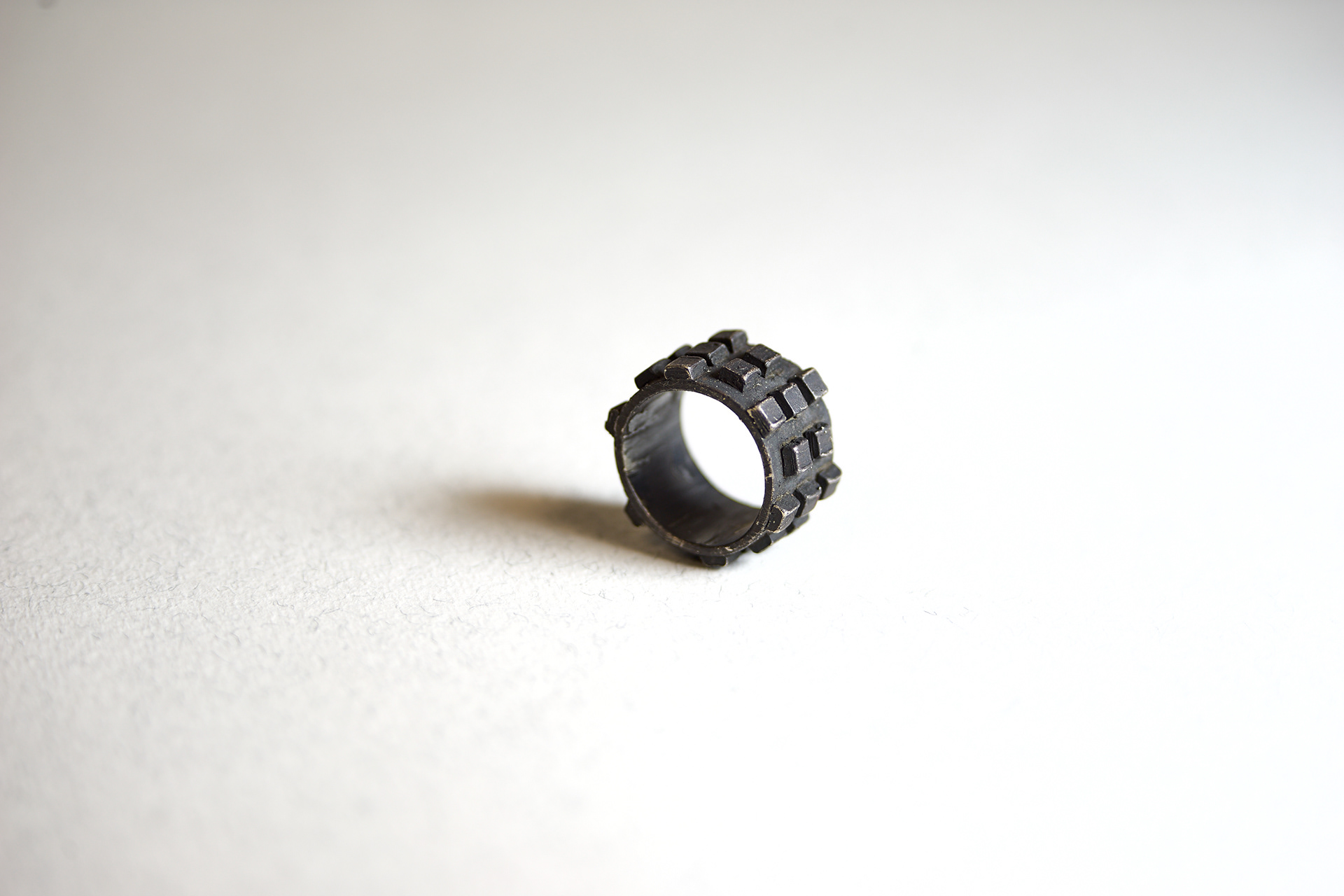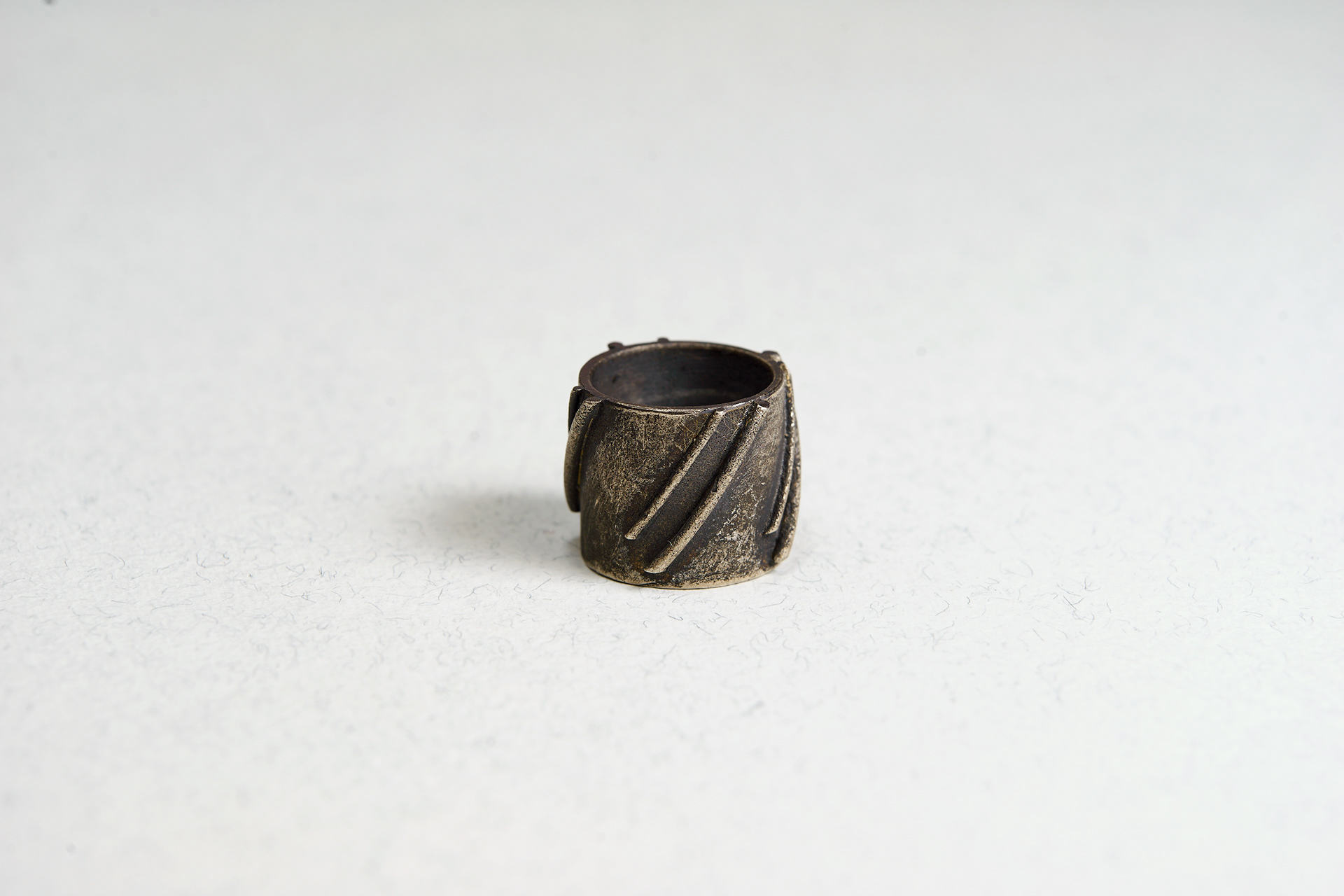Brutalism, minimal intervention, imperfection, raw material, revealing the object's production process, valuing collateral, ephemeral, and casual aspects, exploring the relationship between order and chaos, between geometry and free form—these are the realms that one seeks to engage with.
The lost-wax technique allows for an exploration of these aspects; the metal casting process is both primitive and modern, replete with stages, possibilities, and unpredictable elements. The series of rings and pendants crafted using the lost-wax method stem from a formal exploration of modularity and torsion. They draw inspiration from gears, screws, wheels—objects invented for infinite recursive action, an axial symmetry embodying the archetype of cycles, with reliefs capturing shadows and light.
Constructed piece by piece by hand, these geometric objects embody both rigor and imperfection. The history of manual labor remains visible in small imperfections, enriching the geometry with imperceptible details.
